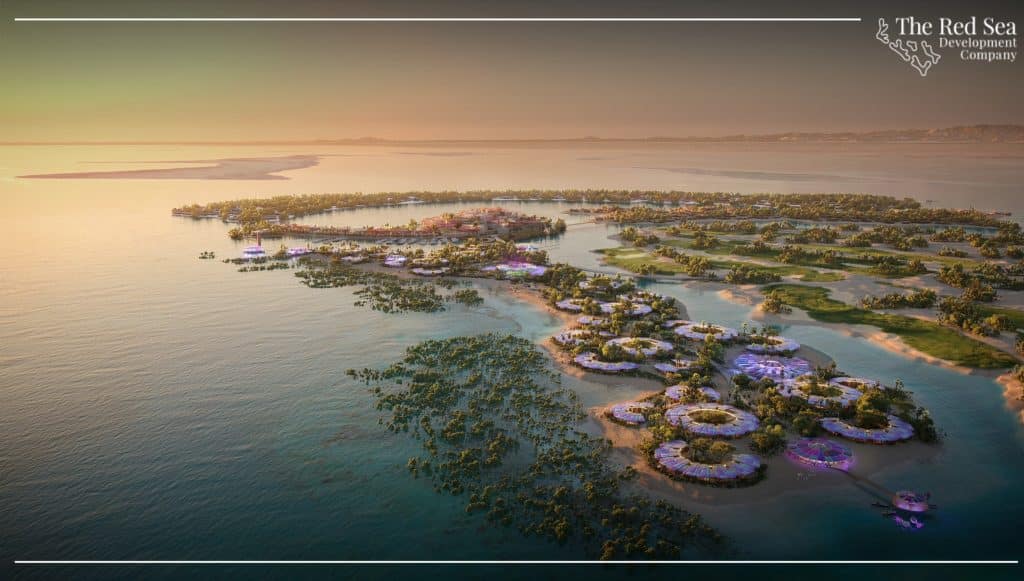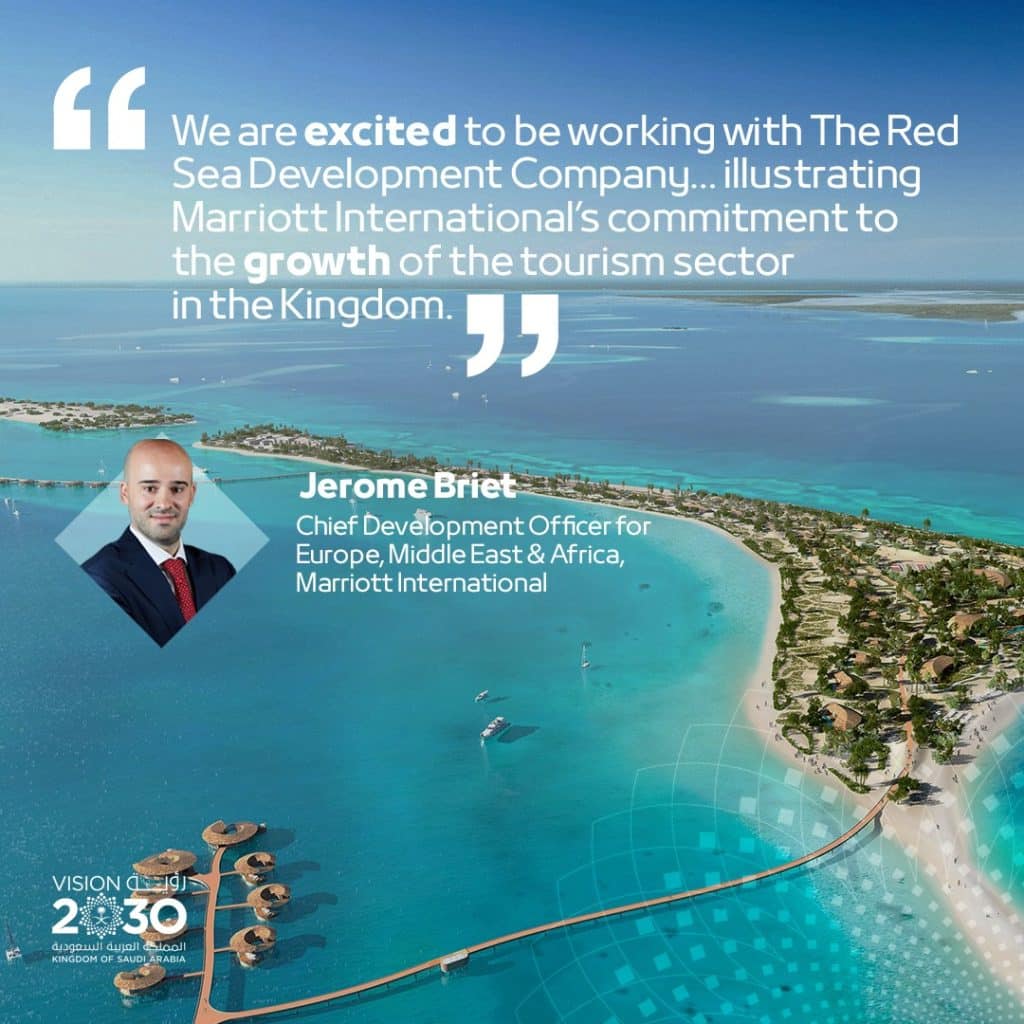Historically conservative and closed, the wind of change is sweeping through the Kingdom of Saudi Arabia. Under the guidance of its visionary leader, Crown Prince Mohammed Bin Salman (MBS), Saudi Arabia has acknowledged the importance of diversifying its economy to embrace the post-oil horizon.
Through the Saudi Vision 2030, Saudi Arabia is seeking to transform itself into the next eldorado of tourism. Here, we take a closer look at Saudi Arabia’s monumental scheme and strategies.
The Saudi Vision 2030

The Saudi Vision 2030 is a strategic framework to reduce Saudi Arabia’s dependence on oil, diversify its economy, and develop public service through vital sectors such as tourism, education, infrastructure, and so on.
Among others, the Saudi Vision 2030 aims to present Saudi Arabia as a more open, tolerant, and secular country. Achieving this means focusing on developing the tourism industry in this ultra-conservative society that has traditionally been reluctant in welcoming international visitors other than for pilgrimage and business-related visits.
As it stands, traveling to Saudi Arabia for leisure and tourism is as simple as securing your flights and hotels on reputable online booking platforms such as Wego.
Latest Project Updates:
– Saudi Arabia Promotes Investment Environment to Fund Cultural Projects
– PROJECT UPDATES: Saudi Arabia’s most important medium-term projects, initiatives
– AMANA reveals current project pipeline, to focus on Saudi gigaprojects
– Saudi Arabia spends $503m on water projects in Northern Borders region
Megaprojects

The Saudi government has poured billions of dollars and invested in mega tourism projects across the country envisioned by the Crown Prince himself.
Case in point, NEOM, Saudi Arabia’s USD 500 billion futuristic megacities currently being constructed from the ground up in the Tabuk Province. NEOM’s role as a futuristic smart city and tourist attraction will be complemented by its special status as an economic zone for hosting investments in cutting-edge technologies. The site is north of the Red Sea, east of Egypt across the Gulf of Aqaba, and south of Jordan.
In July 2017, the colossal Red Sea Project was announced by the Saudi government. A part of Saudi Arabia’s Vision 2030, the Red Sea Project is a massive luxury and sustainable tourism undertaking encompassing a vast nature reserve consisting of some 90 pristine islands, dormant volcanoes, heritage sites as well as coral reef dive areas. Easily the size of Belgium, the megaproject is set to welcome guests by the end of 2022 following the opening of the Red Sea International Airport.

Flanked by the Red Sea Project in the south and NEOM to the north, a luxury tourist development dubbed Project Amaala will ferry guests on a journey of transformation via its high-end wellness retreats, luxury resorts, and recreational activities. The luxury wellness complex is smack dab in the center of an impressive 3,800 square kilometers nature reserve bearing the Crown Prince’s name.
Redevelopment of historic sites
For the Al Ula region, efforts have been made to promote and encourage travelers to visit the ruins of an ancient carved city of Mada’in Saleh, which, like Petra, was constructed by the Nabataeans some 2,000 years ago.
The port city of Yanbu, a few hours away from Madinah, offers an ancient spice route reportedly traversed by Lawrence of Arabia in the early years of the 20th century. Yanbu is also renowned for its oil refineries, industrial plants, and its illuminated lanes of Souq Al Lail (night market).
In order to provide more exposure, the Saudi tourism authority is currently featuring an inductee to UNESCO’s world heritage-recognized sites, namely the 6,000-year-old oasis of Al Ahsa. Covered with 2,5 million date palm trees, travelers to Al Ahsa will be greeted by historic mosques, hot and cold springs, as well as sweeping panoramic vistas of the surrounding desert and beyond.

With the government seemingly sparing no effort in altering the global tourism landscape, Saudi Arabia is determined to achieve the 2030 vision of an open and welcoming society where economic growth and development opportunities are perfectly aligned.
Tourism initiatives
The stakes are now high with the objective of attracting 100 million tourists in 2030, including 55 million international visitors and 45 million domestic visitors. The Saudi government has taken steps and laid out plans to significantly boost the demand for tourism in the coming years.
One of the most notable initiatives was the issuing of the Saudi tourist visa in September 2019 just before the onset of the COVID-19 pandemic. For the first time since the nation’s founding, travelers from 49 countries were given the opportunity to visit Saudi Arabia for non-religious tourism purposes. After a two-year pause imposed by the pandemic, the Saudi visit visa is once again being issued.
Other fundamental changes have also been introduced to boost tourism. These landmark changes may also be considered as social reforms as such, with unmarried couples now free to book and stay at any hotel in Saudi Arabia.
Moreover, women can travel to Saudi Arabia without a male guardian and there is no law for female travelers requiring them to wear the burqa/veil during their visit. Women are also allowed to drive now which may allow female visitors to rent cars on their Saudi trips.
However, alcohol remains a sensitive subject and the authorities have yet to announce any changes to this. While this is pure conjecture, the Saudi government may just make compromises by establishing zones or areas where people will be allowed to consume alcohol.
Additionally, Saudi tourism authorities have since been involved in numerous local and international tourism exhibitions while simultaneously managing and marketing tourism destinations, sites, packages, products, and itineraries both internally and externally.
As a result, according to the Saudi official tourism website, more than 3,500 tourism investment licenses have been granted thus far.

